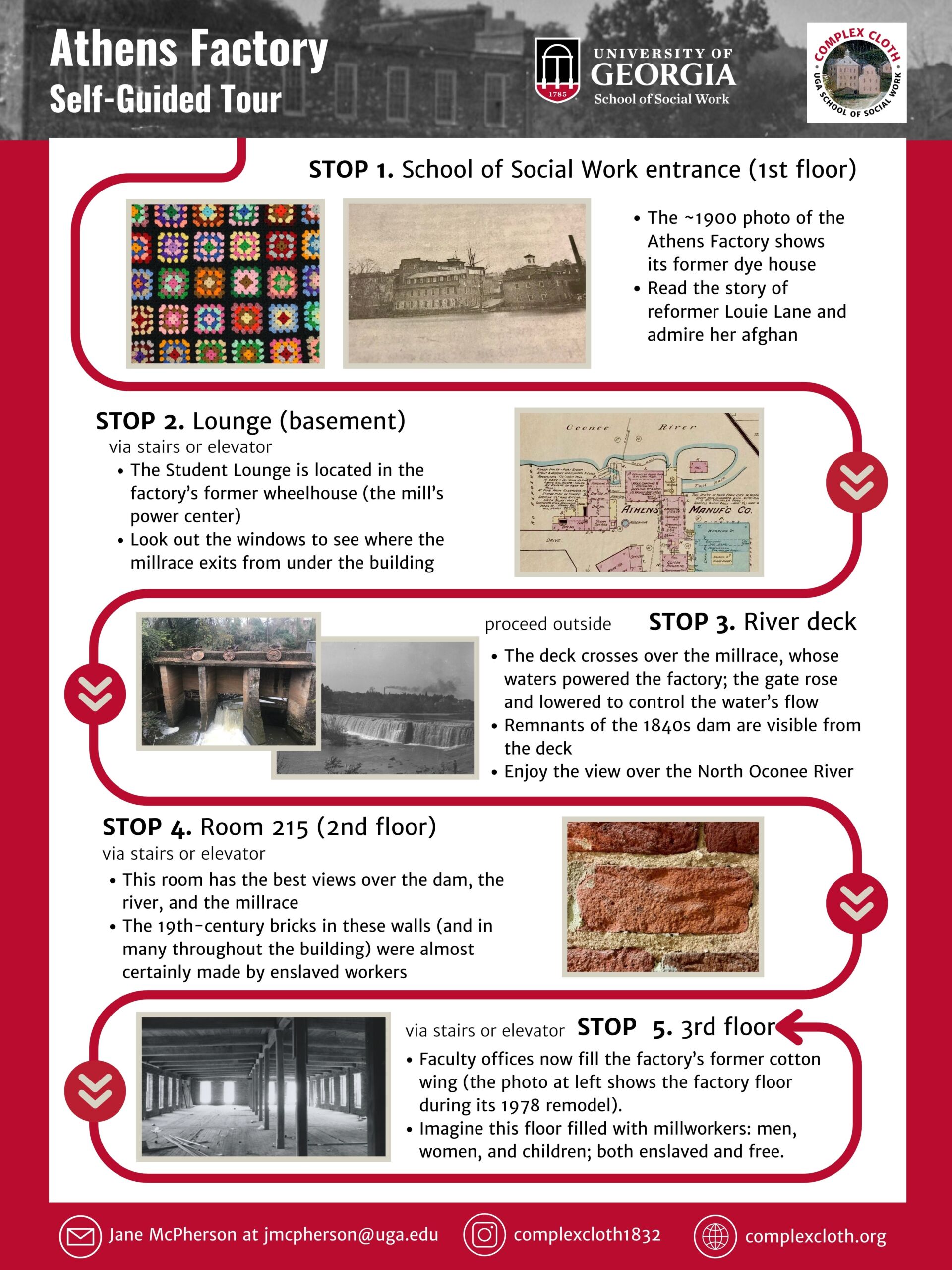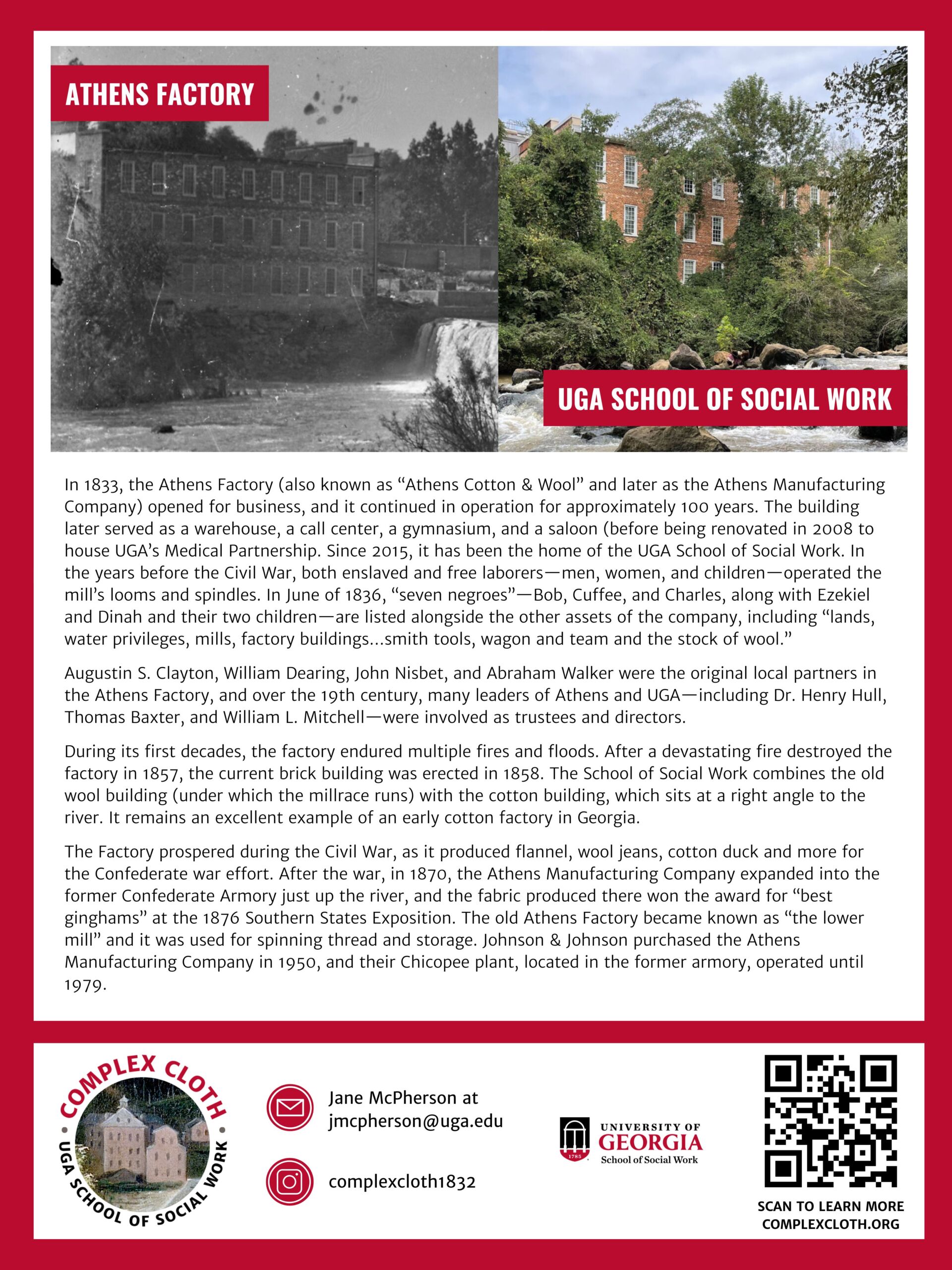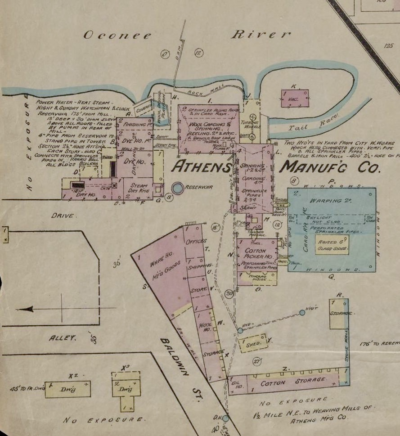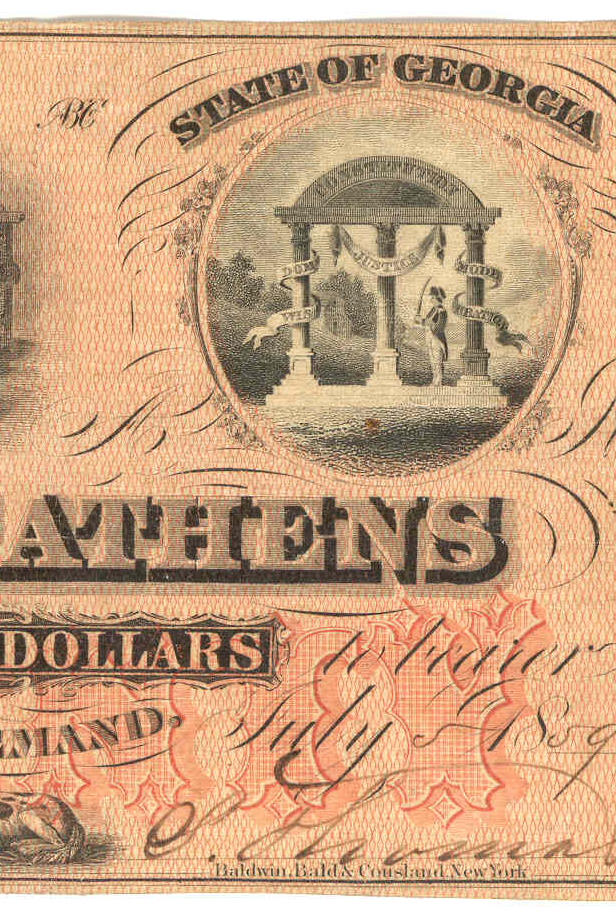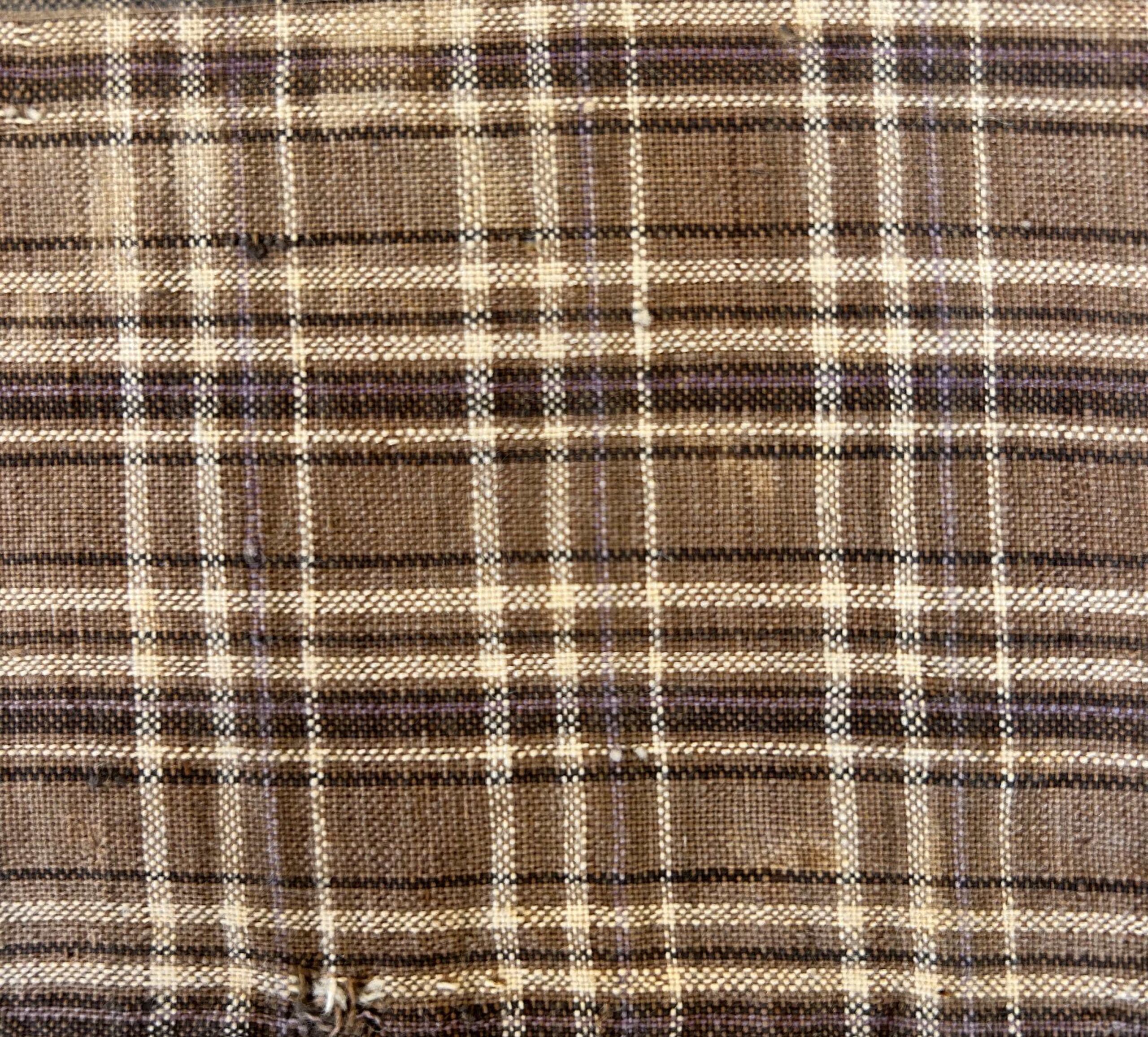The UGA School of Social Work is Located in an Antebellum Cotton Mill
The building that now houses the UGA School of Social Work at 279 Williams Street in Athens, Georgia, was once the Athens Manufacturing Company—commonly known as the “Athens Factory.” It was first built (almost certainly by enslaved labor) in 1833 to turn slave-produced cotton and wool into thread and cloth (Gagnon, 2012). The factory continued operating as a textile mill until the 1920s when it closed permanently. The building later served as a warehouse, a call center, a gymnasium, and a saloon (Greer, 1978) before being renovated in 2008 to house the University’s Medical Partnership. Since 2015, it has been the home of the UGA School of Social Work.

UGA’s Red and Black newspaper reports on the “New tavern resurrected from Old Mill” on May 24th, 1978.

Editorial, The Southern Watchman, November 12, 1857, Georgia Historic Newspapers, Digital Library of Georgia
During its years as a cotton mill, the factory was seriously damaged three times by catastrophe—by fire in 1834 and 1857 (Athens Factory Burnt, 1857), and by flood in 1840 (Gagnon, 2012). According to the Southern Watchman, the 1857 fire was believed to have been “the work of an incendiary,” a 19th-century figure of speech suggesting arson (Buckingham, 1842).
Each time, the investors rebuilt and the factory recovered. The building the School of Social Work occupies now was built after the 1857 fire. The foundations of the older buildings are still visible.
Self-Guided Factory Tour
The Athens Manufacturing Company grew quickly, and by 1850 it was larger than Clarke County’s two other cotton mills: the Princeton Mill near Five Points and the factory at Whitehall (Gagnon, 2012). The Civil War was a period of significant growth for the company, and the investors reaped huge profits weaving flannel for Confederate soldiers’ underwear, wool jeans for their uniforms, cotton duck for tenting, and more (Gagnon, 2012). In 1870, company stockholders expanded their business again by purchasing the former Cook and Brother Confederate Armory (now UGA’s Chicopee Building). The new factory, known commonly as “the Check Factory,” became the company’s weaving hub, while the Athens Factory remained central for storage and thread production (Gagnon, 2012).
Once both factories were operating, at least for a brief period, factory employees transported thread and cloth between the facilities by boat on the North Oconee River (Federal Writers’ Project, 1936).
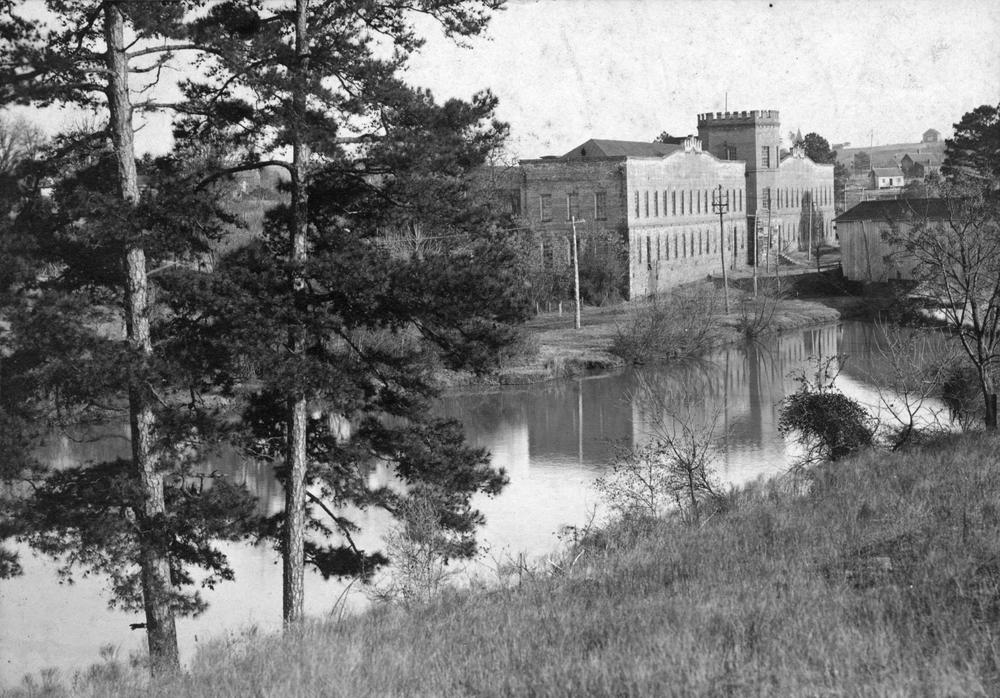
The Athens Manufacturing Company bought the former Confederate Armory in 1870
Photograph by David L. Earnest, Hargrett Library, UGA
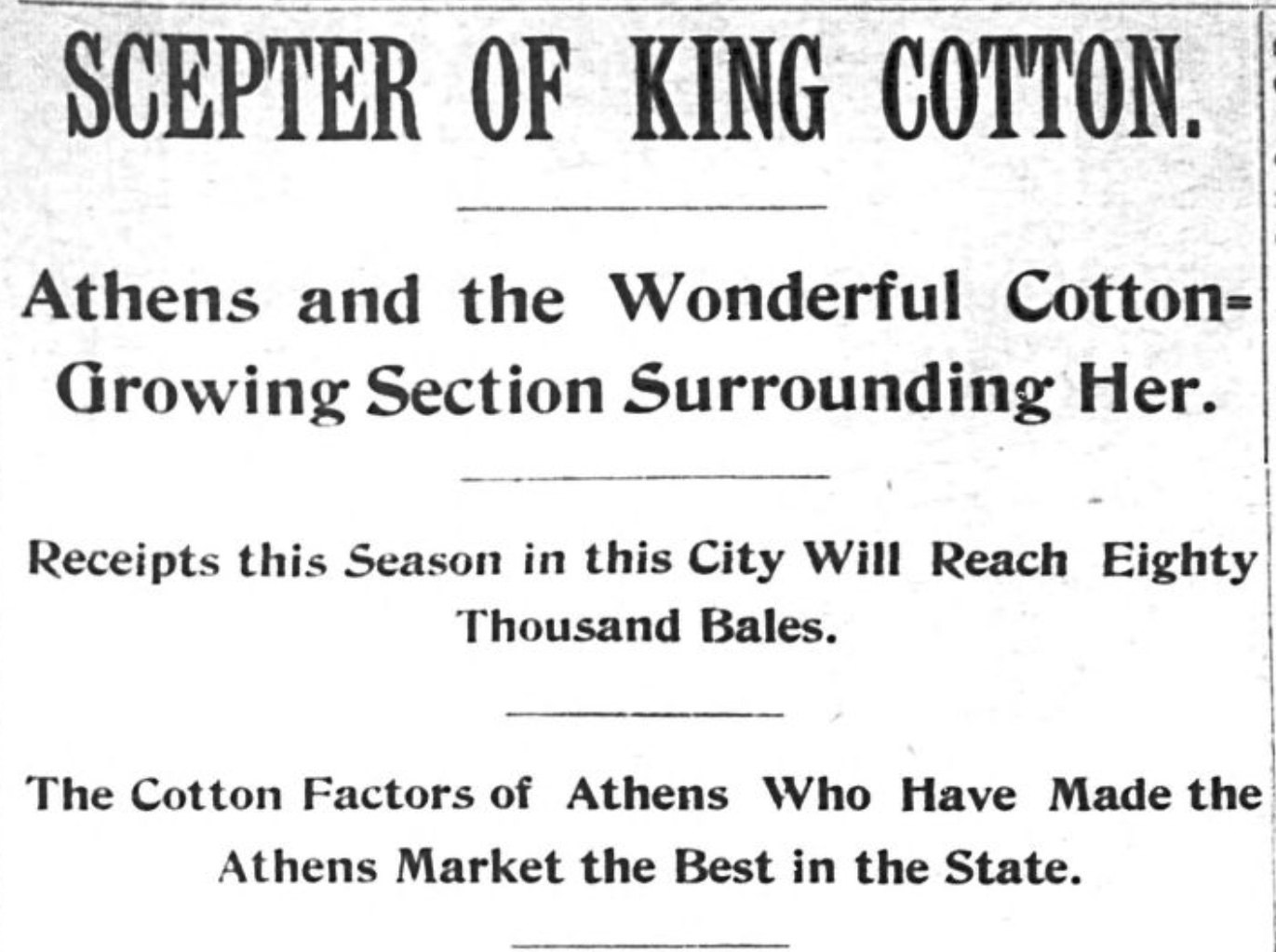
Editorial, The Athens Daily Banner, December 10, 1897, Georgia Historic Newspapers, Digital Library of Georgia
All of this success was made possible by cotton. According to Henry Hull who was a child during Athens’ early years, the first local cotton was planted by one of Athens’ first settlers, Daniel Easley, near the banks of the North Oconee near the current site of UGA School of Social Work (Hull, 1906). Cotton caught on and there are many local accounts of cotton growing in yards and fields all over the area that is now Athens. Athens was also a major cotton market.
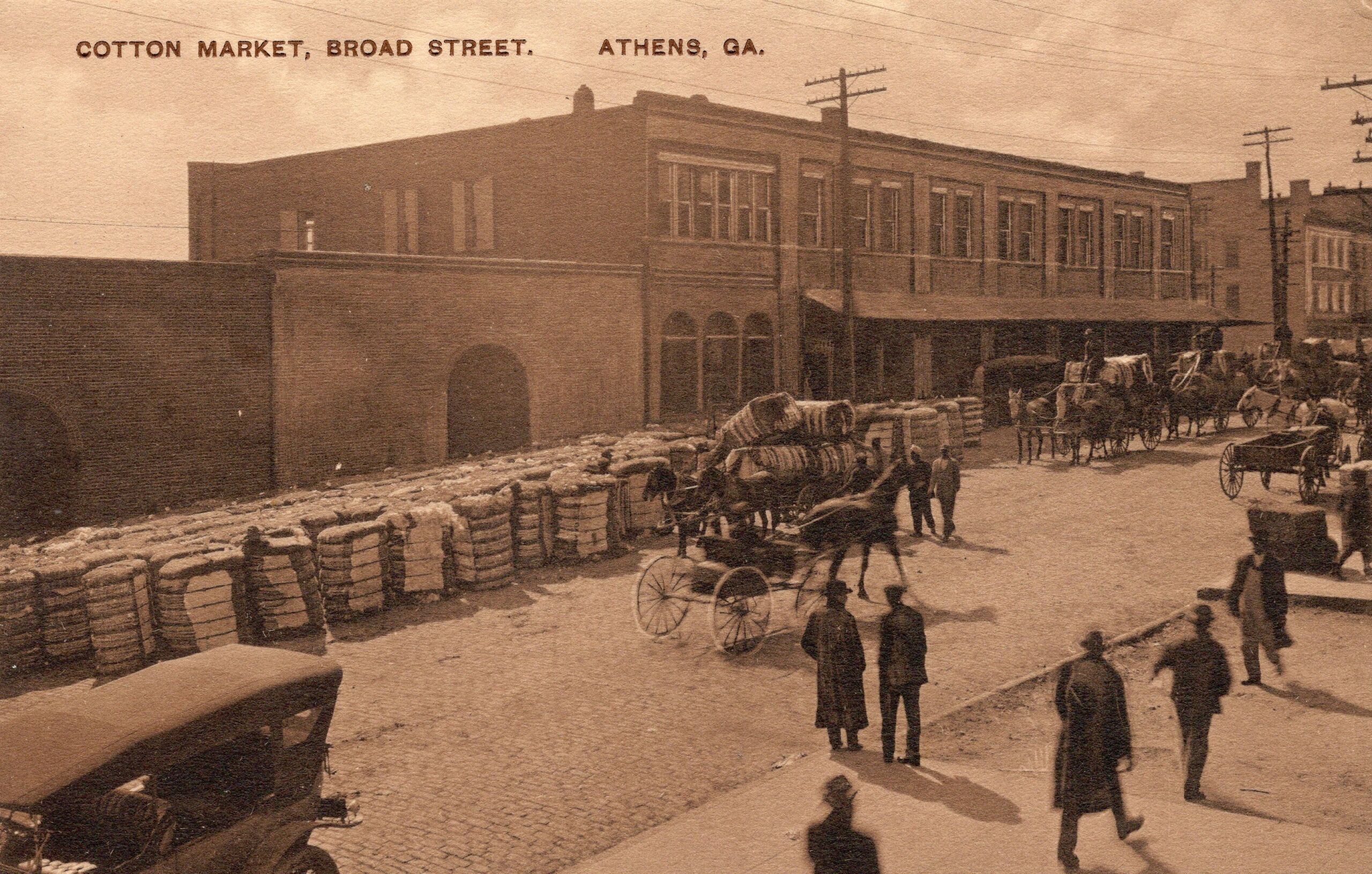
Athens cotton market in the early 1900s. Image courtesy of Gary Doster.
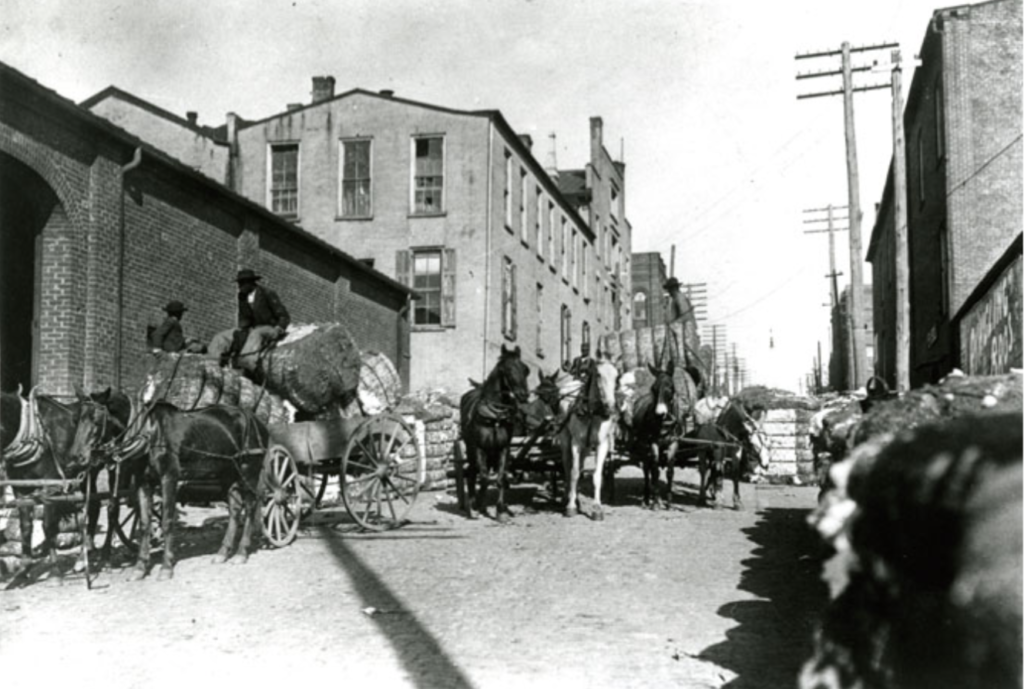
Wagons hauling cotton to warehouses on Thomas Street sometime between 1912 and 1918.
Photograph by Frederick Ball, Hargrett Library, UGA
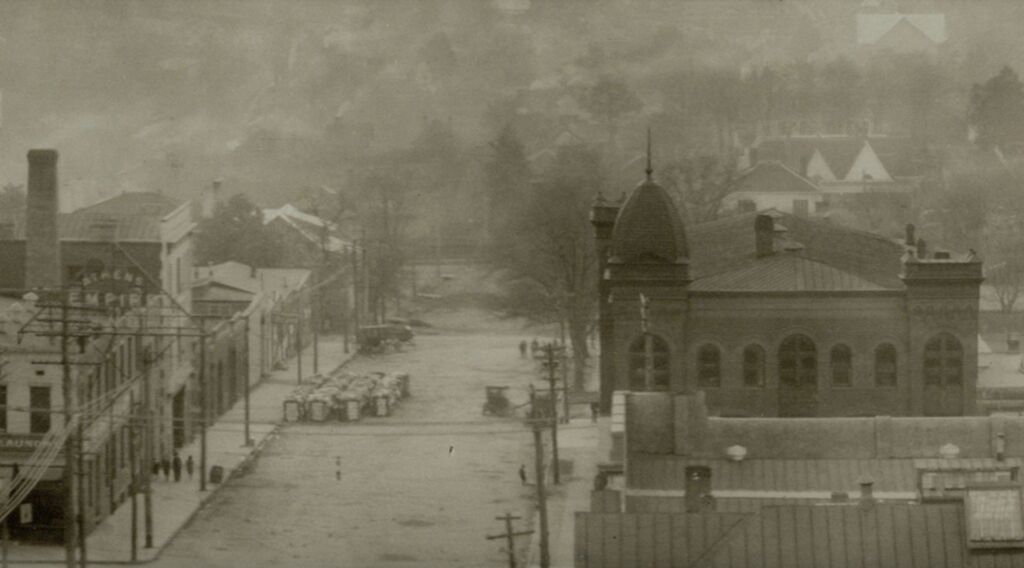
Cotton bales in the streets of Athens. From “Panoramic view of Athens,” 1914.
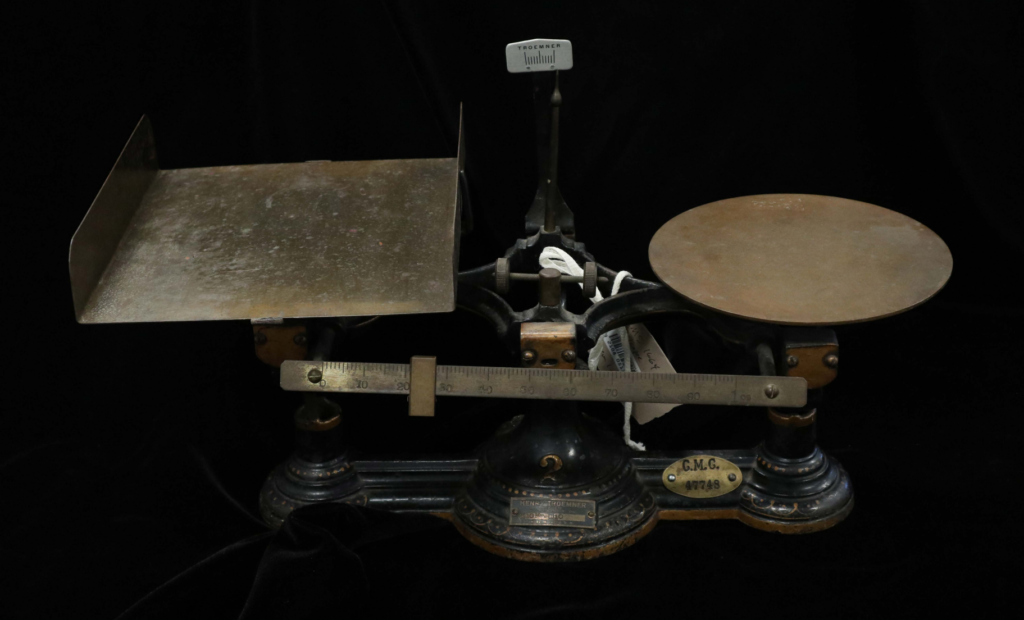
Scale for weighing cotton, Chicopee Manufacturing Company records, Hargrett Library, UGA
Sources
Buckingham, J. S. (1842). The slave states of America. Fisher, Son.
De Vorsey, L. (1979). Early water-powered industries in Athens Clarke County. Papers of Athens Historical Society, Volume 2. Athens Historical Society.
Federal Writers’ Project. (1936). Federal Writers’ Project: Slave Narrative Project, Vol. 4, Part 3, Kendricks-Styles, Robert Shepherd, 246-263. Retrieved from Library of Congress, Manuscript/Mixed Material. https://www.loc.gov/item/mesn043/
Gagnon, M. J. (2000). Industry and discord in confederate Athens. Athens Historian, Volume 5. Athens Historical Society. https://athenshistorical.org/industry-and-discord-in-confederate-athens/
Gagnon, M.J. (2012). Transition to an Industrial South: Athens, Georgia 1830–1870, Baton Rouge, LA: Louisiana State University Press.
Hull, A. L. (1906). Annals of Athens, Georgia, 1801-1901, with an introductory sketch by Dr. Henry Hull. Digital Library of Georgia. http://dlg.galileo.usg.edu/georgiabooks/do-pdf:gb0145
Cite this Article
McPherson, J. (2024, January 2). The Athens factory. Complex Cloth. https://complexcloth.org/the-athens-factory/
